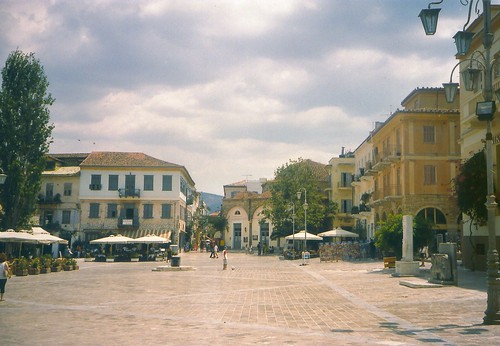.
Administrative Region : Peloponnese
Regional unit : Arkadia
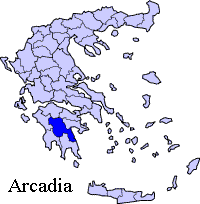

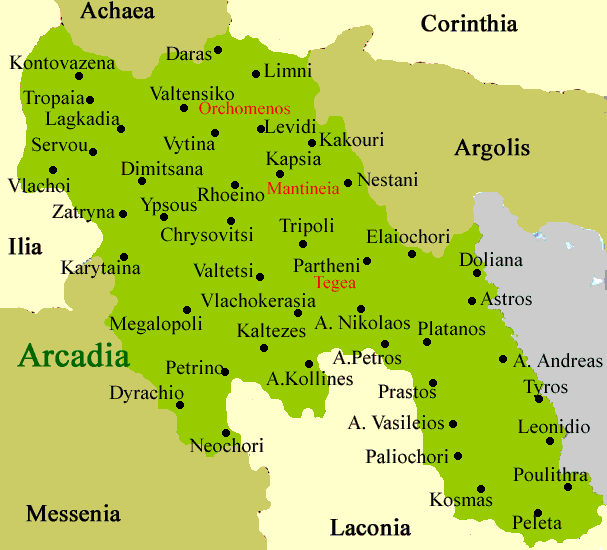
Megalópoli (Μεγαλόπολη) is a town in the western part of the peripheral unit of Arcadia, southern Greece. It is located in the same site as ancient Megalopolis (Ancient Greek: Μεγαλόπολις). "Megalopolis" is a Greek word for Great city. When it was founded, in 371 BC, it was the first urbanization in rustic and primitive Arcadia. In ancient times, the town grew very large. Its theater, known to have a capacity for 20,000 people was one of the largest known. In Byzantine and Ottoman times the city was known as Sinanou (Σινάνο) until the 19th century.
The population in 2001 reached over 5,000. Megalopoli's distance from Tripoli, Greece is 30 km (19 mi). Megalopoli is located 33 km (21 mi) SE from Andritsaina and 55 km (34 mi) NE from Kalamata on Greek National Road 7, and E65. The mountains surrounding Megalopoli are Taygetus, and Tsiberou. Its nearest television and communications tower are on top of mount Tsiberou. Much of the area is isolated, and the forested valley contains about 10,000 people. It is one of the most underpopulated areas in the Peloponnese. It is situated between the Alfeios and the Elisson rivers.
Megalopoli has three schools, lyceums, gymnasia, churches, banks, hotels, a post office and squares (plateia). It also has a train station with a freight yard 1 km from downtown. The track does not pass through to Tripoli. The line for Kalamata – Tripoli – Argos – Corinth is 4 km (2.5 mi) S. A wider highway opened southwest around the 1980s. Megalopolis is now bypassed by a new freeway connecting Kalamata to Athens, which was opened to traffic in 2002. The freeway runs between the little villages Perivolia and Routsi, near Alfeios river.
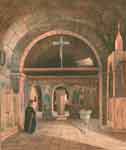
In the mid-1960s, the Public Power Corporation of Greece (PPC S.A.) (DEI) and the government started construction on a power plant. The power plant is approximately 8 km NW of downtown. It was first opened in 1969. It provides electric power to southern Greece. A lignite mining area is situated around the plant. Part of the population are employees of this plant.
Antiquity
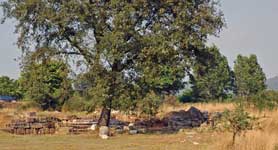
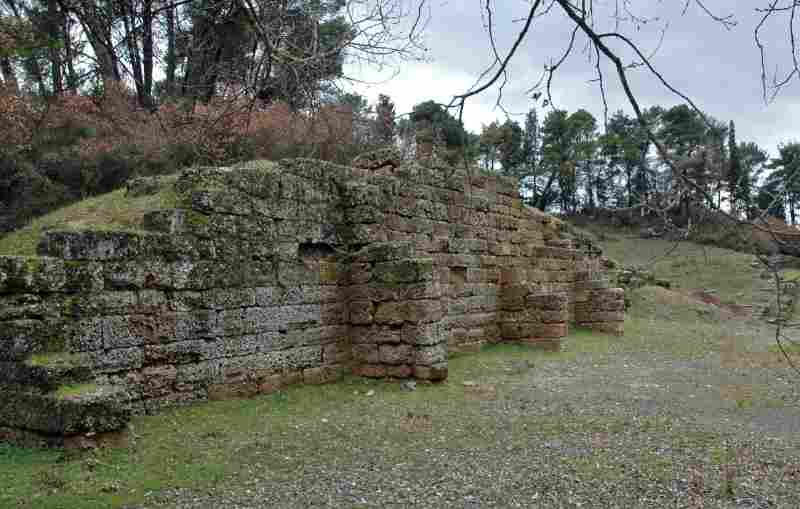
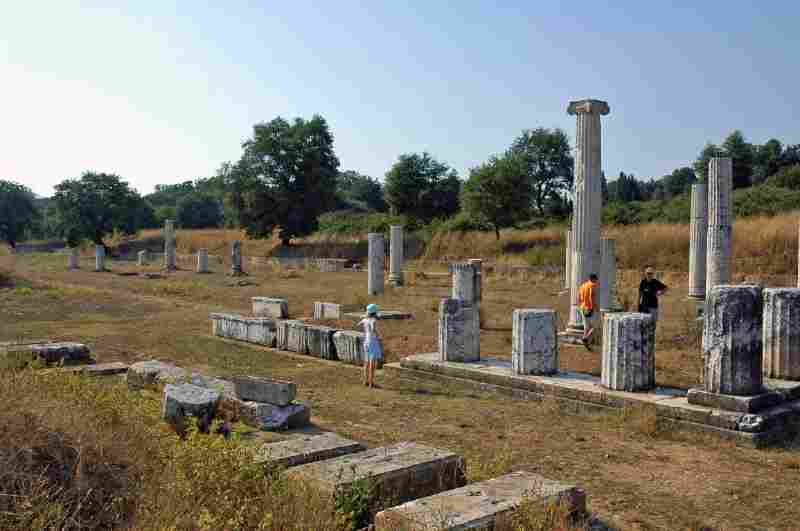
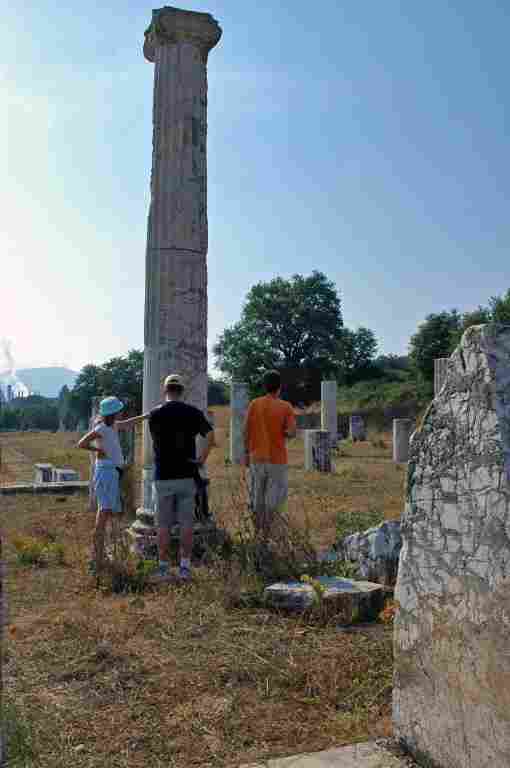
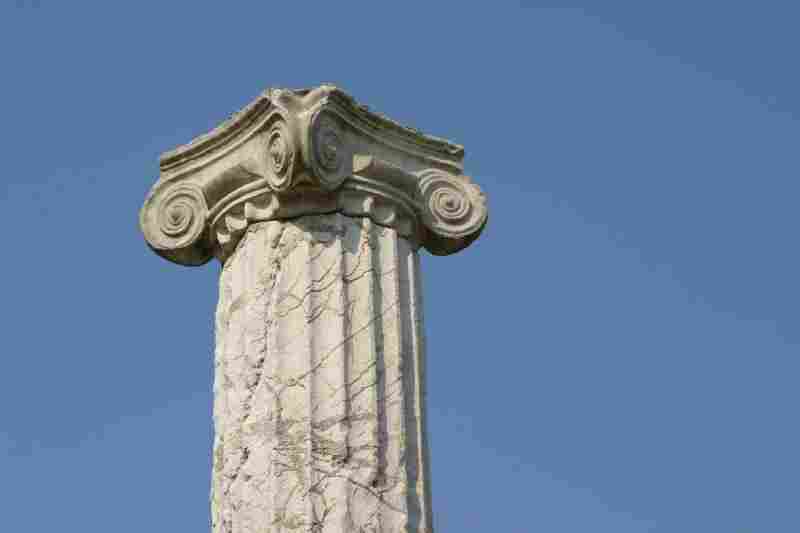
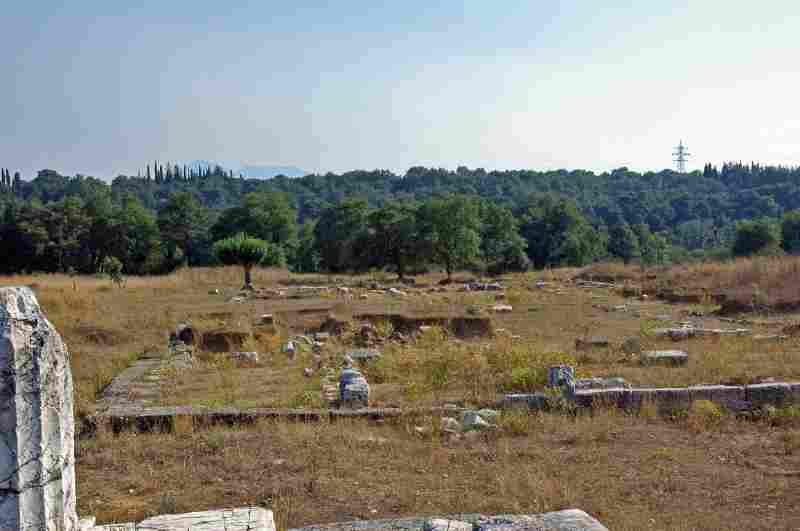
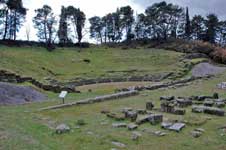
Megalopolis is famous for its ancient ruins situated northwest, which include an ancient theatre that used to hold up to 20,000 people and was 30 m (100 feet) tall. Other landmarks include the Thersileon with 67 pillars and a temple (11.5 m × 5 m, 37 feet x 11 feet). Herodotus reported the ancient belief that the Megalopolis area was a battleground of the Titanomachy. The foundation for this apparently was the presence of lignite deposits, which are prone to catch fire in summer and can smoulder and scorch the earth for weeks (Zeus is supposed to have slain the Titans with lightning bolts; see also below), coupled with the presence of fossil bones of prehistoric elephants and rhinoceroses.[1] Herodotus informs his readers that the bones of "Titans" were exhibited in various places in the surrounding area at least since the 5th century BC.
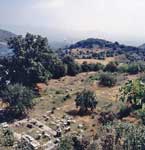
Lykosoura, Despoina Sanctuary, near Megalopolis
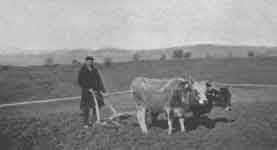

The city was founded in 371 BC by the Theban general Epaminondas in an attempt to form a political counterweight to Sparta. It was one of the 40 places that were megále pólis (great city). Megalopolis became the seat of the Arcadian League in 370 BC, which in the 3rd century BC became the Achaean League. It used to be one of the about 20,000 places that had an ancient theatre. In 331 BC, Megalopolis was invaded by the Spartans and there was a battle with the Macedonians who came to Megalopolis' help. The Macedonians defeated the Spartans. In 223 BC, the Spartan king Cleomenes burnt down the city but it was reinstated by Philopoemen, a Greek General of the Achaean League. The city fell during the Middle Ages and was refounded after the Greek Independence.
Municipality
The municipality Megalopoli was formed at the 2011 local government reform by the merger of the following 3 former municipalities, that became municipal units:[2]
Falaisia
Gortyna
Megalopoli
Subdivisions
Division of the municipality
- Megalopolis / Δ.δ. Μεγαλόπολης [ 5135 ]
- Megalopolis / η Μεγαλόπολη [ 5114 ]
- Oresteion / το Ορέστειον [ 21 ]
- Megalopolis / η Μεγαλόπολη [ 5114 ]
- Anthochorion / Δ.δ. Ανθοχωρίου -- το Ανθοχώριον [ 78 ]
- Ano Karyes / Δ.δ. Άνω Καρυών -- οι Άνω Καρυές [ 106 ]
- Vagos / Δ.δ. Βάγγου -- ο Βάγγος [ 106 ]
- Vastas / Δ.δ. Βάστα -- ο Βάστας [ 147 ]
- Gefyra / Δ.δ. Γεφύρας -- η Γέφυρα [ 49 ]
- Thoknia / Δ.δ. Θωκνίας -- η Θωκνία [ 49 ]
- Isaris / Δ.δ. Ίσαρη [ 263 ]
- Isaris / ο Ίσαρης [ 218 ]
- Petrovounion / το Πετροβούνιον [ 22 ]
- Chrousa / η Χρούσα [ 23 ]
- Isaris / ο Ίσαρης [ 218 ]
- Isoma Karyon / Δ.δ. Ισώματος Καρυών -- το Ίσωμα Καρυών [ 115 ]
- Karatoulas / Δ.δ. Καράτουλα -- ο Καράτουλας [ 82 ]
- Kastanochorion / Δ.δ. Καστανοχωρίου -- το Καστανοχώριον [ 99 ]
- Kato Karyes / Δ.δ. Κάτω Καρυών -- οι Κάτω Καρυές [ 51 ]
- Lykaion / Δ.δ. Λυκαίου -- το Λύκαιον [ 100 ]
- Lykosoura / Δ.δ. Λυκοσούρας -- η Λυκόσουρα [ 94 ]
- Lykochia / Δ.δ. Λυκοχίων -- τα Λυκόχια [ 146 ]
- Makrysion / Δ.δ. Μακρυσίου [ 172 ]
- Makrysion / το Μακρύσιον [ 53 ]
- Kato Makrysi / το Κάτω Μακρύσι [ 119 ]
- Makrysion / το Μακρύσιον [ 53 ]
- Mallota / Δ.δ. Μαλλωτών -- τα Μαλλωτά [ 73 ]
- Marathoussa / Δ.δ. Μαραθούσσης -- η Μαραθούσσα [ 56 ]
- Nea Ekklisoula / Δ.δ. Νέας Εκκλησούλας -- η Νέα Εκκλησούλα [ 73 ]
- Neochorion / Δ.δ. Νεοχωρίου Λυκοσούρας -- το Νεοχώριον [ 80 ]
- Paradeisia / Δ.δ. Παραδεισίων [ 339 ]
- Paradeisia / τα Παραδείσια [ 303 ]
- Fanaiti / η Φαναΐτη [ 36 ]
- Paradeisia / τα Παραδείσια [ 303 ]
- Perivolia / Δ.δ. Περιβολίων [ 128 ]
- Perivolia / τα Περιβόλια [ 78 ]
- Vrysoules / οι Βρυσούλες [ 50 ]
- Perivolia / τα Περιβόλια [ 78 ]
- Plaka / Δ.δ. Πλάκας -- η Πλάκα [ 47 ]
- Rapsommatis / Δ.δ. Ραψομμάτη -- ο Ραψομμάτης [ 97 ]
- Soulion / Δ.δ. Σουλίου [ 115 ]
- Soulion / το Σούλιον [ 61 ]
- Dervenion / το Δερβένιον [ 54 ]
- Soulion / το Σούλιον [ 61 ]
- Soulos / Δ.δ. Σούλου -- ο Σούλος [ 32 ]
- Trilofon / Δ.δ. Τριλόφου [ 71 ]
- Trilofon / το Τρίλοφον [ 57 ]
- Palaiomoiri / το Παλαιομοίρι (τ.Κολώνη) [ 14 ]
- Trilofon / το Τρίλοφον [ 57 ]
- Tripotamon / Δ.δ. Τριποτάμου -- το Τριπόταμον [ 85 ]
- Chirades / Δ.δ. Χιράδων -- οι Χιράδες [ 186 ]
- Chranoi / Δ.δ. Χράνων -- οι Χράνοι [ 331 ]
- Choremis / Δ.δ. Χωρέμη [ 152 ]
- Choremis / ο Χωρέμης [ 95 ]
- Apiditsa / η Απιδίτσα [ 57 ]
- Choremis / ο Χωρέμης [ 95 ]
Population
Year Municipal district Municipality
1920 1,776 -
1961 2,235 -
1981 4,875 -
1991 4,646 8,888
2001 5,114 8,657
Notable people
Philopoemen (253-183 BC), general and statesman
Polybius (c. 203–120 BC), historian
| Ancient Greece
Science, Technology , Medicine , Warfare, , Biographies , Life , Cities/Places/Maps , Arts , Literature , Philosophy ,Olympics, Mythology , History , Images Medieval Greece / Byzantine Empire Science, Technology, Arts, , Warfare , Literature, Biographies, Icons, History Modern Greece Cities, Islands, Regions, Fauna/Flora ,Biographies , History , Warfare, Science/Technology, Literature, Music , Arts , Film/Actors , Sport , Fashion --- |
Retrieved from "http://en.wikipedia.org/"
All text is available under the terms of the GNU Free Documentation License


